Nicknamed “The Magnolia State” but also known as “The Hospitality State,” Mississippi was the 20th state to join the United States of America on December 10, 1817.
It has a population of 2,976,149 (as of 2019), making it the 34th most populous state. Mississippi is bordered by the states of Arkansas, Louisiana, Alabama, and Tennessee.
With a total of 48,430 square miles (125,443 square kilometers) of land and water, it is the 32nd largest state.
The capital of Mississippi is Jackson, which is situated in the center of the state.
That’s enough fast facts about the Magnolia State for now, though; we’re here to learn some of the more interesting facts!
Mississippi was named after the Mississippi River.
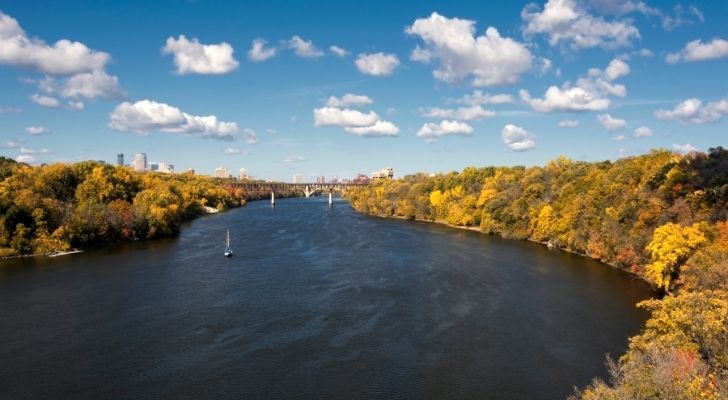
Yep, the Mississippi river’s name came first!
The Mississippi River gained its name when French explorers encountered the Anishinaabe people, who named the river Misi-ziibi, which translates into “Great River.”
People have lived in Mississippi for over 10,000 years.

The first people to populate the Americas were the Paleo Indians, a group of hunter-gatherers.
These Paleo Indians made their way into the Americas during the Ice Age via the Bering Strait, which was a land crossing between the far east of modern-day Russia and the westernmost tip of Alaska.
The people who first made their way as far south as the Mississippi region were their descendants, who had traveled further and further south while hunting megafaunas such as mammoths and mastodon.
These early explorers settled throughout the entirety of the Americas, including modern-day Mississippi.
There were many Native American tribes in Mississippi when Europeans arrived.
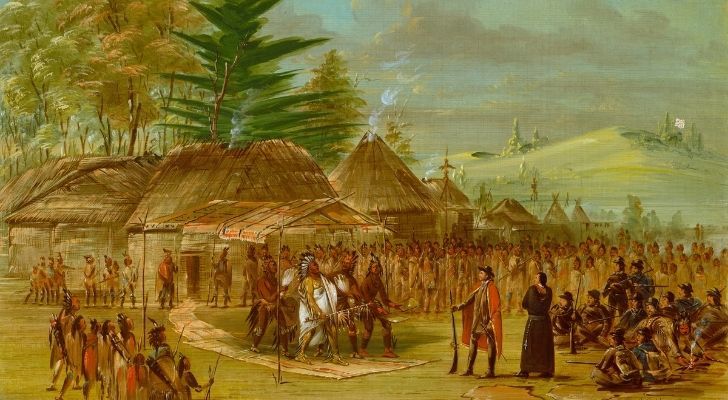
By the time Europeans reached the Americas, many different cultures were thriving throughout the land.
In Mississippi, there were at least seven unique tribes within the region when Europeans first made contact, including the Taensa, Chickasaw, Choctaw, Yazoo, Natchez, Biloxi, and Pascagoula.
A number of these tribes came from the Mississippian culture, a civilization of mound-building people who rose to power and were the predominant culture in the region between 800 to 1600 AD.
Interestingly, the Mississippi culture isn’t actually from the region now known as Mississippi.
The older culture in the region was the Plaquemine culture, whose practices were still carried on by the Natchez and Taensa at the time of European arrival.
The first Europeans to reach the Mississippi region were the Spanish.

The famed Spanish explorer and conquistador Hernando de Soto led the first expedition into modern-day Mississippi in the early 1540s.
He embarked upon this famously disastrous expedition with two goals in mind, to search for both a passage through to the Pacific coast as well as large amounts of gold, which various Native American tribes and other explorers had heard rumors of.
He crossed through modern-day Mississippi while on this expedition, a quest which saw constant clashes with numerous tribes and ultimately his death on the western banks of the Mississippi River.
This expedition found neither gold nor a passage through to the west coast.
The first European settlement in Mississippi was French.
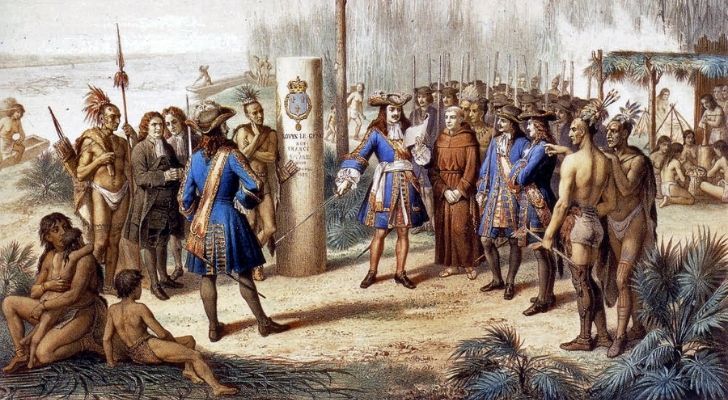
Hernando de Soto’s expedition was a complete and utter disaster, which resulted in Spain temporarily losing almost all interest in the region.
More than a hundred years later, France began their explorations and claimed modern-day Mississippi as a part of New France, specifically La Louisiane.
In April 1699, colonists from France traveled to the Mississippi region and founded Fort Maurepas, the first white settlement there.
Mississippi changed hands many times before it became a part of the United States.

While France was the first European power to control modern-day Mississippi, they certainly weren’t the last.
France had relatively untested control of the Mississippi region until the Seven Year’s War began in 1756, through which colonial France and Britain fought over control of North America.
Great Britain unequivocally defeated France, and as such, they ceded control of the region to the victor in 1763.
Britain’s control of the region was relatively short-lived, with the American Civil war commencing in 1765.
At the end of the war in 1783, the United States of America took control of the majority of Mississippi, although the lower third was given to Spain and became a part of West Florida.
Later, the United States of America gained control of this region, and the Mississippi Territory was created in 1798.
Mississippi was rapidly settled by prospective cotton farmers.

There was little reason for settlers to move as far west as the Mississippi Territory until the invention of the cotton gin, with the population of the region in 1798 numbering around 9,000.
With the cotton gin came the potential for high profits, and Mississippi became a land of unequaled opportunity for white settlers almost overnight.
Hordes of people moved to take advantage of Mississippi’s open plains and fertile soil, with the population exploding to some 222,000 by 1820.
The majority of the population wasn’t white plantation owners; instead, they were enslaved African Americans brought into the region to work on the newly established plantations.
By 1860 more than half the population of Mississippi were slaves.

The excuse that cotton planters gave for such high numbers of enslaved African Americans was that slavery was a “necessary evil” and that cotton production wouldn’t be profitable without it.
As the cotton industry of Mississippi grew, so did the demand for slaves.
A new elite class of whites developed, a class of white plantation owners who owned the majority of land and slaves and lived almost like royalty during this era.
While most white settlers in the region didn’t actually own slaves themselves, they certainly believed that they were far superior in all aspects of life and humanity.
This mindset, along with the cotton plantations’ reliance on slaves, directly led to Mississippi’s secession from the United States in 1861.
Mississippi contributed more than 80,000 troops to the American Civil War.
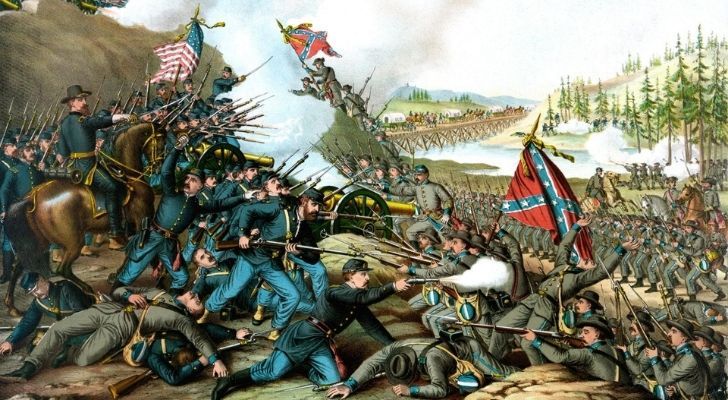
Unsurprisingly, Mississippi was one of the significant Confederate players in the American Civil War.
There were 354,000 white residents of Mississippi in 1860, with 80,000 of them going to war.
To put things into perspective, that means that 23% of white Mississippians fought in the war, with the other 77% including women, children, and seniors.
What we can extrapolate from this is that nearly every single able-bodied man in the state of Mississippi fought for the right to own slaves.
They suffered heavy casualties.
Mississippi went from being one of the wealthiest states to one of the poorest.

Mississippi relied heavily on the cotton industry, and before the American Civil War, it was commonly known that this industry simply wouldn’t be profitable without slave labor.
Up until the Civil War, Mississippi ranked at number 5 on the list of wealthiest US states.
It comes as no small surprise that following their defeat and the abolition of slavery, Mississippi slid into times of great economic depression.
Unfortunately, the state has never recovered, with disasters such as flooding, tornadoes, hurricanes adding to their economic woes.
The origins of the humble teddy bear lie in Mississippi.

At first, it was called “Teddy’s Bear,” and it was named after Theodore “Teddy” Roosevelt, the 26th president of the United States of America.
As the story goes, Roosevelt was out on a hunting expedition with the Mississippi governor near Onward, MI.
Someone had apparently captured a bear, tied it to a tree, and then offered Roosevelt the chance to shoot it.
Roosevelt outright refused, which was an act that rapidly found its way into the press in the form of a satirical cartoon.
A candy shop in Brooklyn capitalized on the idea and created a small stuffed toy bear which they called “Teddy’s Bear.”
Mississippi is the true home of blues music.
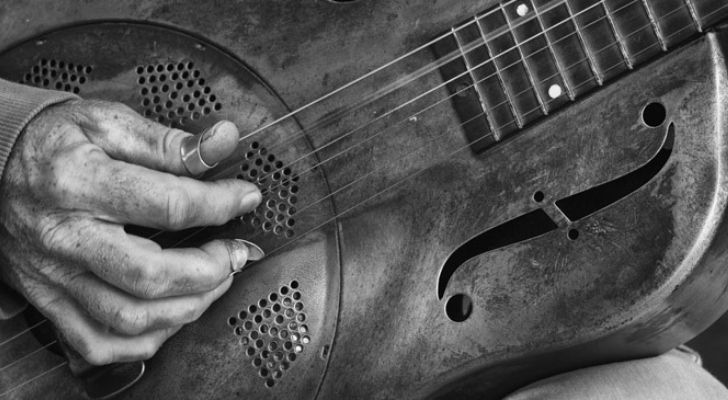
This soulful genre of music has roots that go back to the Mississippi Delta, to the time of the American Civil War.
Much of the lyrics and styles of singing are adapted from the songs sung by African American slaves while they worked in the fields.
After the Civil War, blues developed into a way for newly-freed African Americans to express themselves.
Mississippi experiences an average of 27 tornadoes per year.

Like many other states within the Deep South, Mississippi is too familiar with extreme weather.
There have been five truly deadly tornadoes throughout US history, with two of them decimating parts of Mississippi.
In the southern parts of the state, tornado season is generally in the later months of the year, while in the northern regions, the season is generally in the earlier months.
More than 50% of Mississippi is forested.

When one thinks of Mississippi, one generally thinks of farmland, endless prairies, and of course, the Mississippi River.
One of the more surprising facts about the state is that it’s still quite forested, with more than half of all land covered in either wild or cultivated trees.
While the Mississippi Delta is prime agricultural land, many other regions have been left untouched, with forests of pine, willow, cottonwood, oak, and various hardwoods.
Mississippi’s constitution declares that you must be religious to run for office.

More specifically, the constitution declares that only people who believe in the existence of a Supreme Being are allowed to hold office in the state of Mississippi.
It wasn’t until 1961 that the US supreme court ruled that this restriction was unconstitutional.
The real question here is what actually defines a Supreme Being anyway?
To put it plainly, Mississippi is an incredibly polarizing state with a disastrously tumultuous history.
You can take one look at the state and see everything that was wrong with pre-Civil War America, and it’s hard to look past that.
However, once you manage to dig deeper, you find an incredibly beautiful state straddling the Mississippi River that just wants to get by.


















